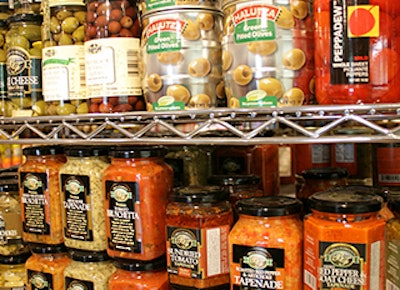
NEW YORK (PRNewswire) — The specialty food industry is a bright spot in the U.S. economy. In 2014, sales of specialty food topped $100 billion for the first time, with retail and foodservice sales reaching a record $109 billion.
Retail sales of specialty food sales grew 19 percent from 2012 to 2014 versus a tepid 2 percent increase for all food. The industry, fueled by small businesses, now boasts 15 segments that exceed $1 billion in sales, including cheese; coffee; meat, poultry and seafood; chips, pretzels and snacks; candy; and yogurt.
These findings are from a new report from the Specialty Food Association produced in conjunction with research firms Mintel International and SPINS/IRI. The report, The State of the Specialty Food Industry 2015, tracks U.S. sales of specialty food through supermarkets, natural food stores, specialty food retailers, and foodservice venues. Specialty foods are broadly defined for the report as products that have limited distribution and a reputation for high quality.
"The time is now for specialty food," says Ron Tanner, vice president of philanthropy, government and industry relations for the Specialty Food Association. "Consumers are looking for new tastes, foods with fewer and cleaner ingredients, health attributes, and products that are made by companies with values they care about. All of these define specialty food."
The top ten best-selling categories have shifted since 2013. Cheese is still tops with $3.7 billion in sales, but coffee and cocoa have jumped over frozen and refrigerated meat, poultry and seafood to claim second place. Bread and baked goods entered the top five, bumping out yogurt. Nuts, seeds, dried fruits and vegetables made it into the top 10, with $1.3 billion in sales in 2014.
The fastest growing categories in unit sales are refrigerated pasta and pizza sauces, up 78 percent since 2012, followed by refrigerated pasta and eggs, both up 53 percent. Other notable gainers in unit sales are functional beverages, nut and seed butters and energy bars and gels. Overall, unit sales of specialty food grew 13.6 percent.
Retail sales of specialty food hit a record $85.5 billion in 2014, representing 78 percent of total U.S. sales of specialty food. Foodservice sales account for the other 22 percent of all specialty food dollars, reaching $24 billion in 2014. Foodservice is an increasingly important sector, with an impressive growth of 30.7 percent since 2012.
Retailers interviewed for the report said "local" is the most important product claim today, and predict it will remain so in three years. Some 66 percent of those surveyed sell products with non-GMO claims.
An eight-page overview of the report is featured in the spring issue of Specialty Food Magazine. Those highlights, plus a larger summary report with charts and data can be found at specialtyfood.com/stateindustry2015
About the Specialty Food Association
The Specialty Food Association is a thriving community of food artisans, importers and entrepreneurs who bring craft, care and joy to the distinctive foods they produce. Established in 1952 in New York, the not-for-profit trade association provides its 3,000 members in the U.S. and abroad the tools, knowledge and connections to champion and nurture their companies in an ever-evolving marketplace. The Association (formerly the National Association for the Specialty Food Trade, Inc.) owns and produces the Winter and Summer Fancy Food Shows, and presents the sofi Awards honoring excellence in specialty food. Learn more at specialtyfood.com





















